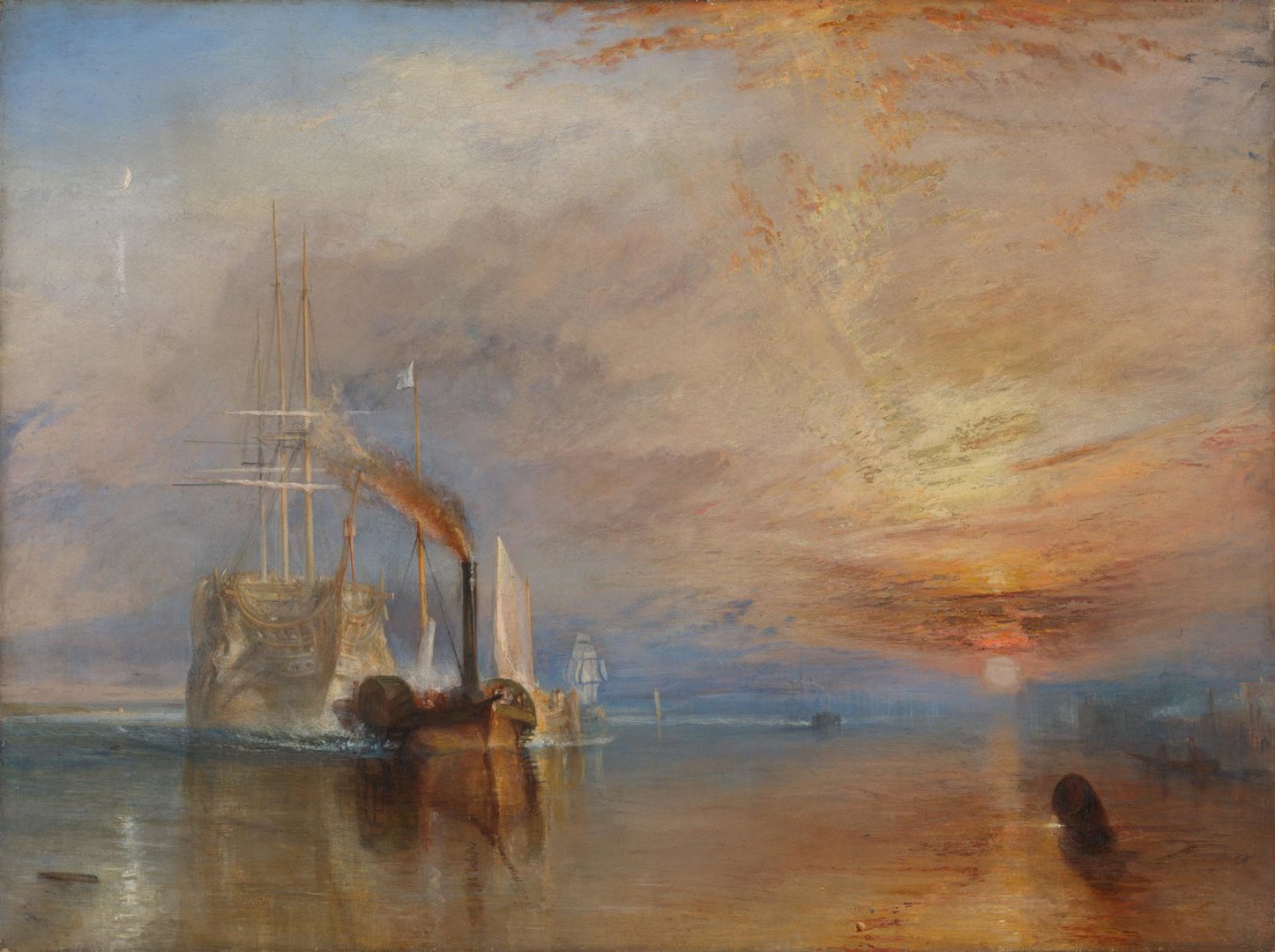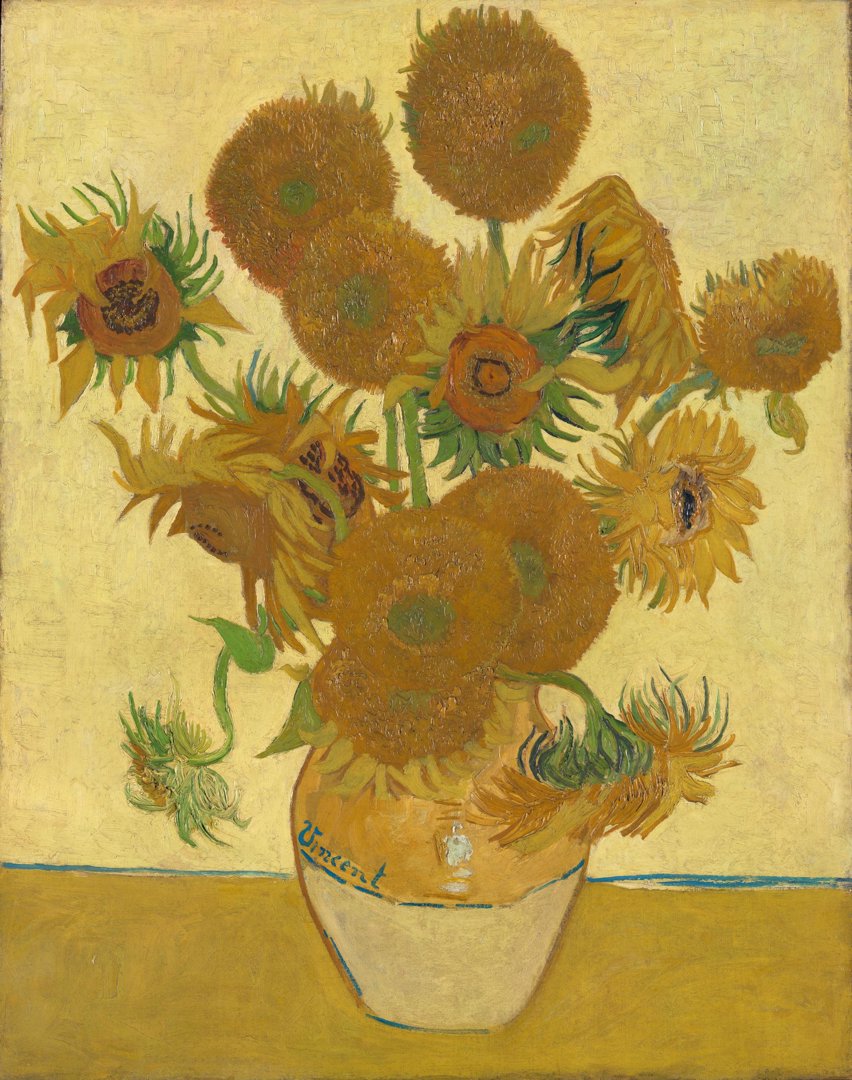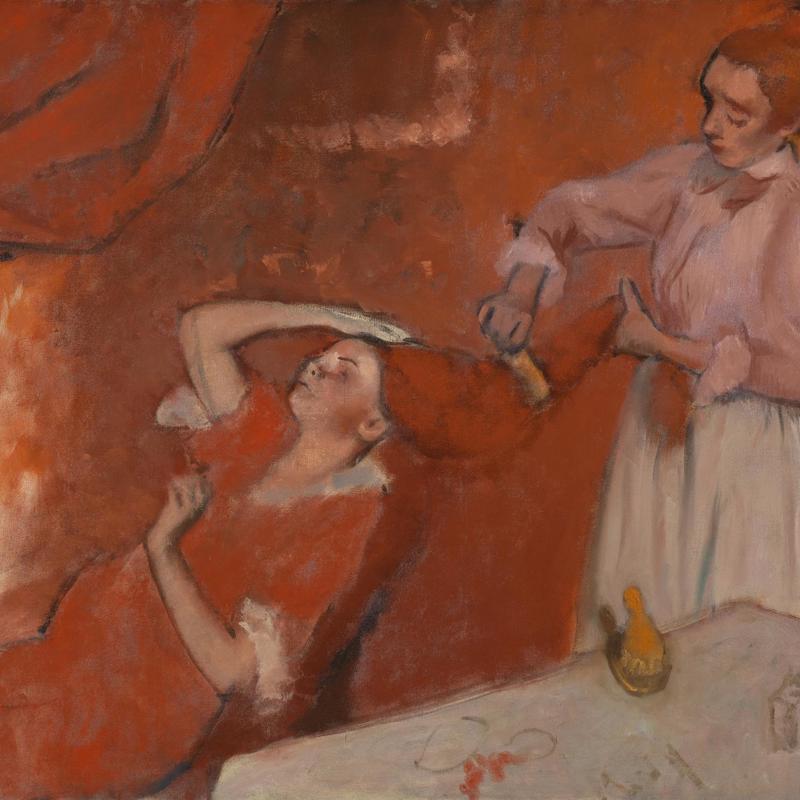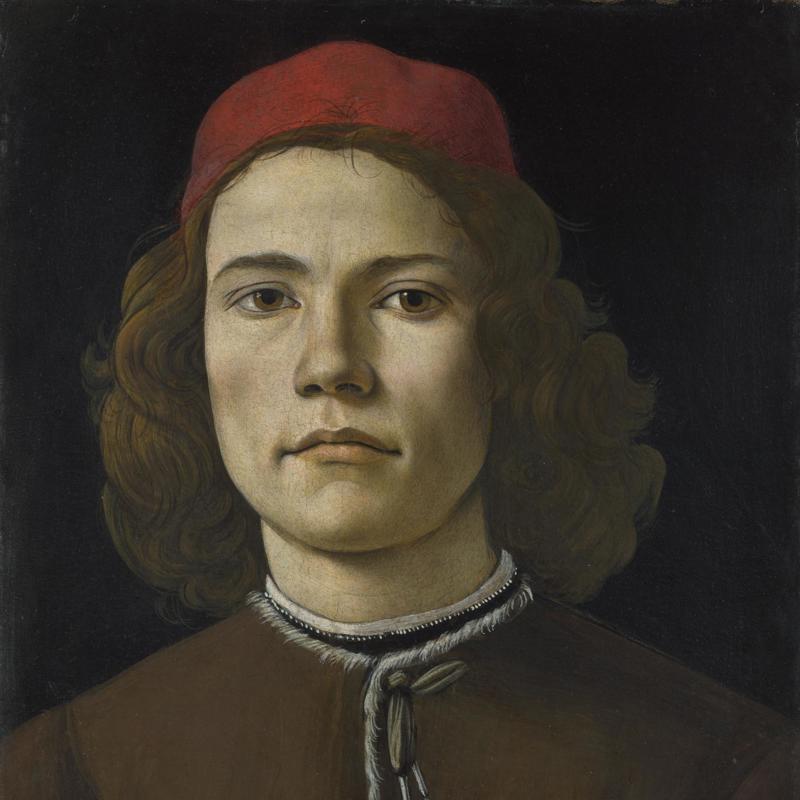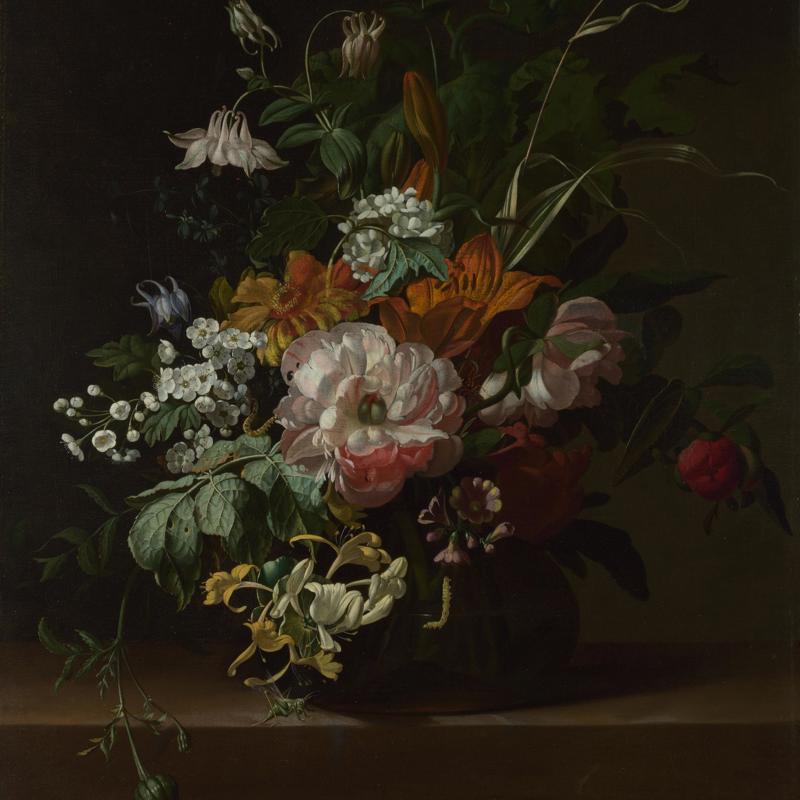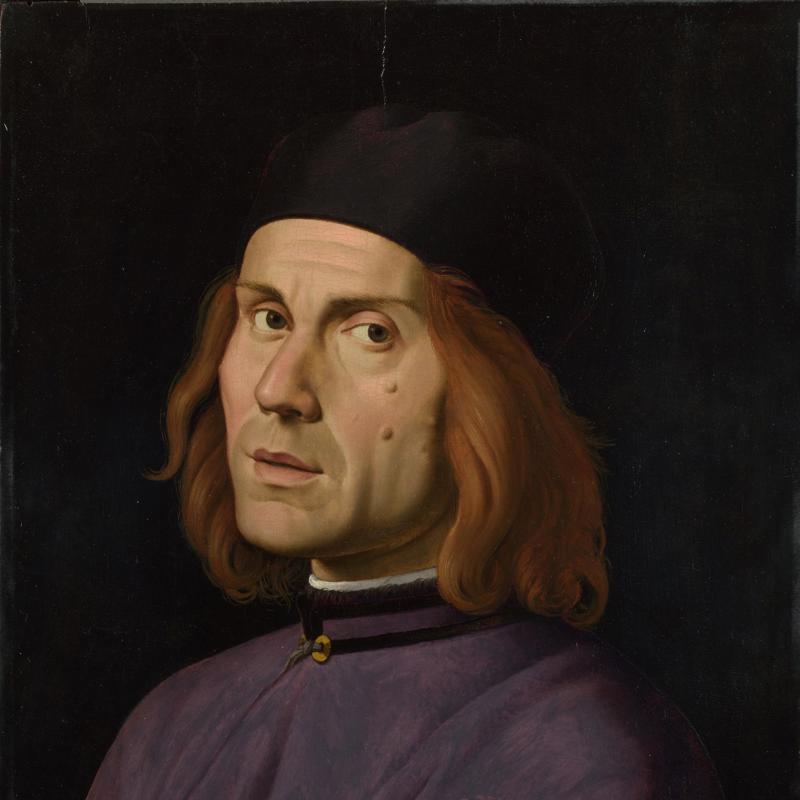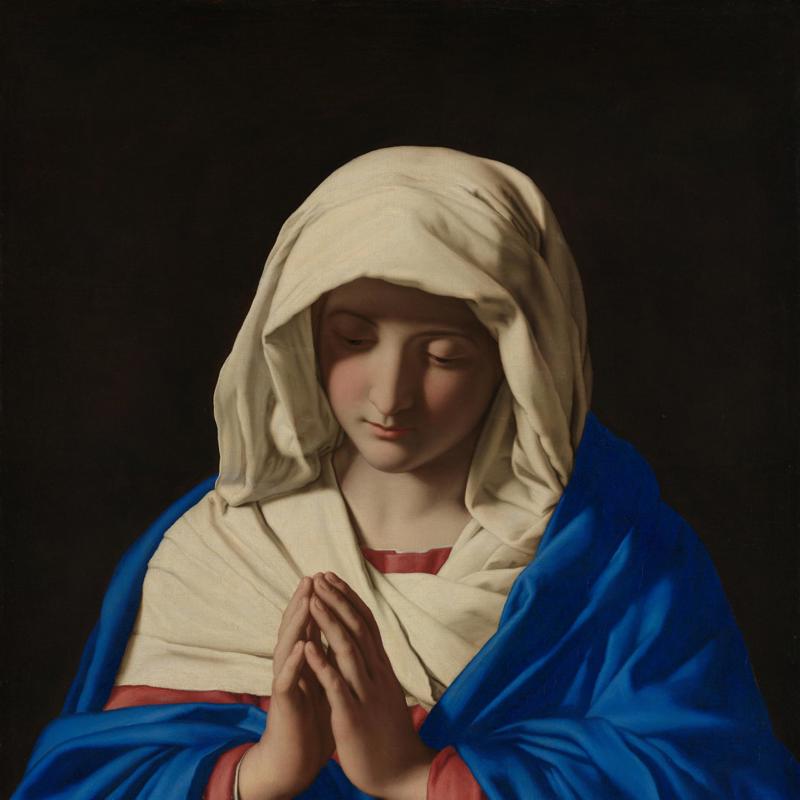Dive in with Catherine Higgitt from the National Gallery's Scientific department to discover the secrets of how Van Gogh used chrome yellow pigment in his 'Sunflowers'. You'll even see the chemistry of how this fantastic colour is made.
Yellow, with its radiant warmth and connection to the sun, has long been a colour that captivates artists. From ancient golden pigments to the modern, but impermanent, yellows of the 19th century, the colour holds symbolic and emotional resonance.
For centuries artists have used yellow to express light, beauty and virtue – from the iconography of the Virgin Mary and early modern Italian portraiture, to Joseph Mallord William Turner’s atmospheric seascapes and Vincent van Gogh’s glowing sunflowers.
The Christian symbolism of yellow
Yellow’s association with light is made evident in religious art. In ‘The Immaculate Conception of the Virgin’ by Bartolomé Esteban Murillo and his studio, the Virgin Mary is bathed in a golden light.
This luminous haze recalls the description in the Book of Revelation in the Bible, which describes the Woman of the Apocalypse, often considered to be a reference to the Virgin Mary, as ‘clothed with the sun.’ Here, yellow is a symbol of divine radiance.
In Nicolas Poussin’s portrayal of the Annunciation, Mary wears a pale-yellow robe trimmed with blue. While blue is the colour traditionally associated with the Virgin Mary, the more unusual choice of yellow may symbolise her purity and humility.
The colour of the sun
Few artists have embraced the radiance of yellow like Turner. His fascination with light led him to use a variety of yellows to describe the atmospheric effects in his sea and landscapes. In ‘Sun Rising through Vapour', Turner paints a pale-yellow sun struggling to pierce through a bank of mist, casting a soft, ethereal glow over the sea. He must have had a deep affinity with the painting, as he bought it back at a higher price after it had been sold.
In ‘The Fighting Temeraire', the setting sun blazes and throws golden light across the water, symbolising the end of an era as an old warship is towed away. The sunset charges the painting with emotion. As the art critic John Ruskin noted, Turner’s 'most deeply crimsoned sunset skies’ frequently signified death. Painted more than 30 years apart, ‘The Fighting Temeraire' and ‘Sun Rising Through Vapour’ represent Turner’s enduring fascination with light, especially at the beginning and the end of the day when the sun’s atmospheric effects are at their most extreme.
A symbol of virtue
Painted in the 15th century, Alesso Baldovinetti’s ‘Portrait of a Lady' shows an unknown sitter in profile, her yellow hair and dress standing out against a rich blue background. At the time, golden hair was considered an ideal of beauty and virtue. Since this is likely a marriage portrait, Baldovinetti’s use of yellow emphasises the woman’s desirability.
While blonde hair is a marker of beauty and virtue in Baldovinetti’s portrait, it is portrayed much more sensuously in Palma Vecchio’s ‘A Blonde Woman'. The sitter gazes directly at the viewer, her pale-yellow hair cascading down her bare shoulders in soft waves. The colour of her hair is echoed by the delicate buttercups in the posy of flowers she holds. They are possibly an illusion to Flora, the goddess of spring. In 16th-century Italy, the name Flora was often associated with courtesans. This duality is evident in Palma Vecchio’s portrait, where the sitter's beauty is portrayed as being both innocent and alluring, her golden tresses a symbol of her desirability.
Yellow gold
One of yellow’s most important roles in art is its close relationship with the colour of gold. This connection is present in language; ‘yellow’ comes from the Old English ‘geolu’ which is related to the English word ‘gold’. One of the earliest yellow pigments was orpiment, a yellow made from an arsenic sulfide-containing mineral. Its name comes from the Latin 'auripigmentum', meaning 'gold pigment.'
The earliest evidence of the colour was discovered in Egypt, dating from the 14th century BC. Incredibly, orpiment was still being used three millennia later by artists including the British painter Sir Joshua Reynolds. In his portrait of Colonel Tarleton, he used it to pick out the golden highlights in Tarleton’s uniform.
Another important yellow pigment was lead tin yellow, a pale lemon yellow sometimes referred to as the ‘Yellow of the Old Masters’ because of how frequently it was used by renowned artists of the past. Rembrandt used it extensively in ‘Belshazzar’s Feast’, including to add the golden highlights to Belshazzar’s gold brocade cloak, suggesting glimmers of reflected light.
New yellows: Innovation and decay
The 19th century saw the introduction of new bright yellow pigments which became essential to artists seeking to capture the vibrancy of nature. In Jean-Baptiste-Camille Corot’s ‘The Four Times of Day: Morning’, a luminous band of cadmium yellow stretches across the horizon, evoking the first glow of dawn. This rich yellow pigment stands out against the subdued browns of the landscape.
Vincent van Gogh had a deep passion for the colour yellow. His friend and fellow painter Paul Gauguin remarked, 'Oh yes, he loved yellow, this good Vincent, this painter from Holland — those glimmers of sunlight rekindled his soul, that abhorred the fog, that needed the warmth.' One of his most iconic and well-loved works, ‘Sunflowers’, is a celebration of the colour yellow, from golden ochre to bright, lemony hues.
Among the pigments used by Vincent van Gogh in ‘Sunflowers’ was chrome yellow, a bright and opaque pigment introduced in the 1800s. Its name comes from the element chromium, from which it is derived. However, chrome yellow pigments were often chemically unstable, and tended to turn brown over time. Van Gogh was well aware of these issues. Referring to chrome yellow, he wrote that ‘all the colours that Impressionism has made fashionable are unstable.’ There is some evidence of darkening chrome yellow in Van Gogh’s ‘Sunflowers’, which can be prevented or slowed down by carefully controlling the environment in which the painting is displayed. In this sense, Van Gogh’s ‘Sunflowers’ are as fragile as the real flowers they depict – beautiful but ultimately impermanent.
From vibrant petals to the soft glow of dawn, artists have used yellow to capture the luminous world around them for centuries. For some, it was a colour embued with religious significance, symbolising divine radiance and virtue. For others, like Van Gogh, it was a lifelong fascination that still shines through in their work today.





